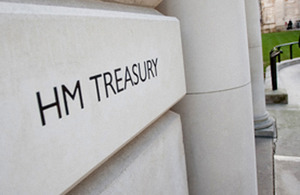Government could save hundreds of millions of pounds by ending public sector redundancy give away
Modernisation of public sector redundancy rules could save taxpayers hundreds of millions of pounds by 2020.

- rule changes will reduce huge discrepancies in redundancy payment rules that exist within the public sector
- government鈥檚 plan to modernise public sector pay and conditions has already saved 拢12 billion
- new rules will bring the public sector more in line with the private sector practice
Government plans to modernise public sector redundancy rules will reduce the cost of pay-outs and ensure greater consistency between workforces across the public sector.
The changes, being consulted on today (5 February 2016), could save taxpayers hundreds of millions of pounds by the end of this parliament.
Currently, redundancy payments vary across the public sector, even for people with similar levels of pay and length of service. The proposals in the consultation will put pay-out terms between different workforces on a more equal footing, ensuring a fairer deal for public sector workers.
The new rules will also align currently generous public sector redundancy payments with those available in the wider economy. Research indicates that redundancy pay is higher in the public sector. Between 2010-11 and 2013-14, redundancy pay averaged 拢12,700 in the private sector compared to 拢15,800 in the public sector. The proposed changes will make public sector redundancy payments fairer, modern, and more consistent. They will apply to all major workforces including the Civil Service, Teachers, NHS workers, local government workers, police offers and firefighters. The changes include:
- setting a maximum tariff to calculate exit payments at three weeks鈥� pay per year of service
- capping the maximum number of months鈥� salary that can be used to calculate redundancy payments to 15 months
- introducing a tapering element that will reduce the amount of compensation lump sum an individual is entitled to the closer they get to their retirement age
- setting a salary cap for calculating exit payments which will be based on 拢80,000
- reducing the cost of employer funded pension top ups for early retirement as part of redundancy packages
Chief Secretary to the Treasury, Greg Hands said:
At the Spending Review the government set out how it will protect Britain鈥檚 economic security, fix the public finances and return the country to surplus so we can pay down our national debt.
A key part of this is modernising the public sector workforce. Reforming public sector redundancy payments could save taxpayers hundreds of millions of pounds by 2020 and will ensure that public sector workers get a fair deal by ensuring greater consistency in redundancy pay-out terms between workforces.
New guidance for public sector employers on pay and terms will set out what is acceptable and what isn鈥檛. Taxpayers鈥� money shouldn鈥檛 be used to pay for private health insurance and gagging orders to cover up bad practice.
These are just the latest steps in our modernisation plan 鈥� which saved taxpayers 拢12 billion over the last parliament.
The reforms build on those new rules which were set out in the Small Business, Enterprise and Employment Act 2015. They mark the next step in the government鈥檚 plan to modernise Britain鈥檚 public services.
The Chief Secretary to the Treasury, Greg Hands has also written to all departments setting out new guidance on the rules they must follow on pay and terms for public sector workers.
The new guidance brings together rules on public sector pay and terms into a single, clear publication for the first time. Public sector workers must comply with the guidance which include Chief Secretary approval of pay packages above 拢142,500, confidentiality clauses should only be used in exceptional circumstances, and taxpayer鈥檚 money should not be used to pay for private health insurance.
Separately, the government is delivering changes that mean that no public sector exit payment can be more than 拢95,000 and stopping highly paid bosses getting to keep generous exit payments when they leave one organisation only to join another.
In total, the government has already saved 拢12 billion through its reforms to public sector pay and conditions and the measures being consulted on today will deliver further value for money for the taxpayer.